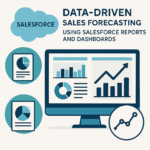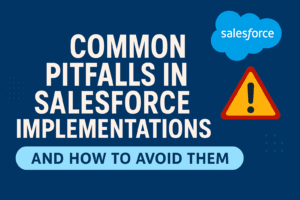BLOG
Guide to a Conversion Attribution Model
Understanding the analytics of an attribution model will help you better understand the impact of your advertising campaigns and marketing strategies.
With almost any given buyer, the journey from brand introduction to loyal customer is long and hardly ever a one-click wonder.
Buyer journeys can start with lead generation activities in social media, branch out to email, and eventually, they result in a sale. With so many stops along the way, digital marketers often struggle with to assess the ROI for their efforts.
Attribution modelling revamps the ROI analysis process. It also makes it easy for marketers to calculate how their marketing strategies are delivering sales. Today, we’ll help you better understand this model, how to use it and how to make the most of it.
What is attribution modelling?
A conversion attribution model is used to measure the overall impact of your communication with customers.
Its main goals are:
- To find what piece of marketing is convincing your customers to buy from you
- To estimate how much profit that piece is generating
From there, you can determine your ROI –Return On Investment. You will finally see which forms of digital marketing are actually affecting your profits and which ones aren’t.
By following a model or set of rules, you’ll assign credit for your sales to different types of digital marketing. This is an accurate way to determine the most effective tools and strategies for your business.
To best explain it, let’s use an example.
The Buyer’s Journey
Let’s say you’re a property developer in Melbourne. A woman performs and organic search on Google for “apartments in Melbourne.” She sees a Google Ad for your site and clicks on it.
She browses your landing page and enters her details to obtain a development brochure. A few days later, she clicks on a link from your automated email and returns to your site. She doesn’t buy anything, but two days later, she types in your web address directly and then calls you about the home. She eventually buys the home.
In this example of the buyer’s journey (which is not unlike many other buyer journeys), which piece of digital marketing deserves the credit for the sale of the home?
Was it the original Google ad that first brought her to the site? What about the email campaign and the direct channel? Depending on which model of marketing attribution you implement, the answer will be different. We’ll discuss these models in depth later.
What you need to remember about attribution modelling marketing is that it deviates from other forms of marketing analysis. Why? Because it looks at a different set of metrics to determine success.
Some marketing analysis rely on click-through rates, web visits, impressions and share of voice. Instead, attribution marketing looks into metrics such as profit, the volume of sales, customer retention and turnover to judge how valuable a digital ad is.
How do I use a Marketing Attribution Model?
Getting started with attribution modelling works the same no matter which model of it you decide to use.
You will need to complete two steps. The first step is to start tracking all digital touchpoints that appear during the buyer’s journey. This includes social media marketing (such as Facebook and Twitter), email marketing and search engine marketing.
Also, you’d be tracking how many people are coming to your website via direct channel — typing it into their web browsers. Most digital marketers use tracking tags on their site to see that this is done effectively.
It’s possible to use a range of programs that will track every page, ad and email you send. These will let you map your buyer’s journey so you can map out the buyer’s journey and will become vital once you decide which attribution modelling to implement.
You may also use marketing automation software like Marketo or Oracle Eloqua to track the progress of your emails and social media accounts. With Facebook Ads Manager, you can actually set up a web-tracking pixel and paste it into the coding of your website. It will start anonymously following visitors and collecting their data.
It should be noted that all tracking is done legally. All of the information tracked is anonymous. You’re just looking for how buyers react to your marketing displays.
Once you’ve begun effectively tracking your visitors and building information on their buyer journeys, you need to implement an attribution model to determine how you’ll gauge the effectiveness of your marketing channels.
Common types of attribution modelling
Let’s return to the example above. Here are the types of attribution models you could use to determine the effectiveness of your marketing:
Last Touch
The last touchpoint before the sale. In the example, that would be the direct channel – typing in the web address. It is 100 percent responsible for the sale.
Last non-direct click
Same as previous model, but disregards direct channels. In this case, the automated email would receive the credit for the sale.
First touch
The first point of contact between marketing and consumer. The Google search would receive credit in this scenario.
Linear
All marketing types get equal credit. Google search, Facebook ad, email and direct channel would get 25 percent of credit.
Position based
The credit is split. Forty percent goes to each of the first and last points of contact (search and direct channel in this case), and the remaining 20 percent is split between the remaining points (email).
Time decay
The points of contact closest to the sale receive the most credit. The credit significantly drops the farther away the point is from the sale. Email and direct channel would get the most while search would get the least.
All of these methods of attribution model analytics are effective, but not all of them will be effective for your business model. Consider the metrics that are important to your business and you can map the model accordingly.











